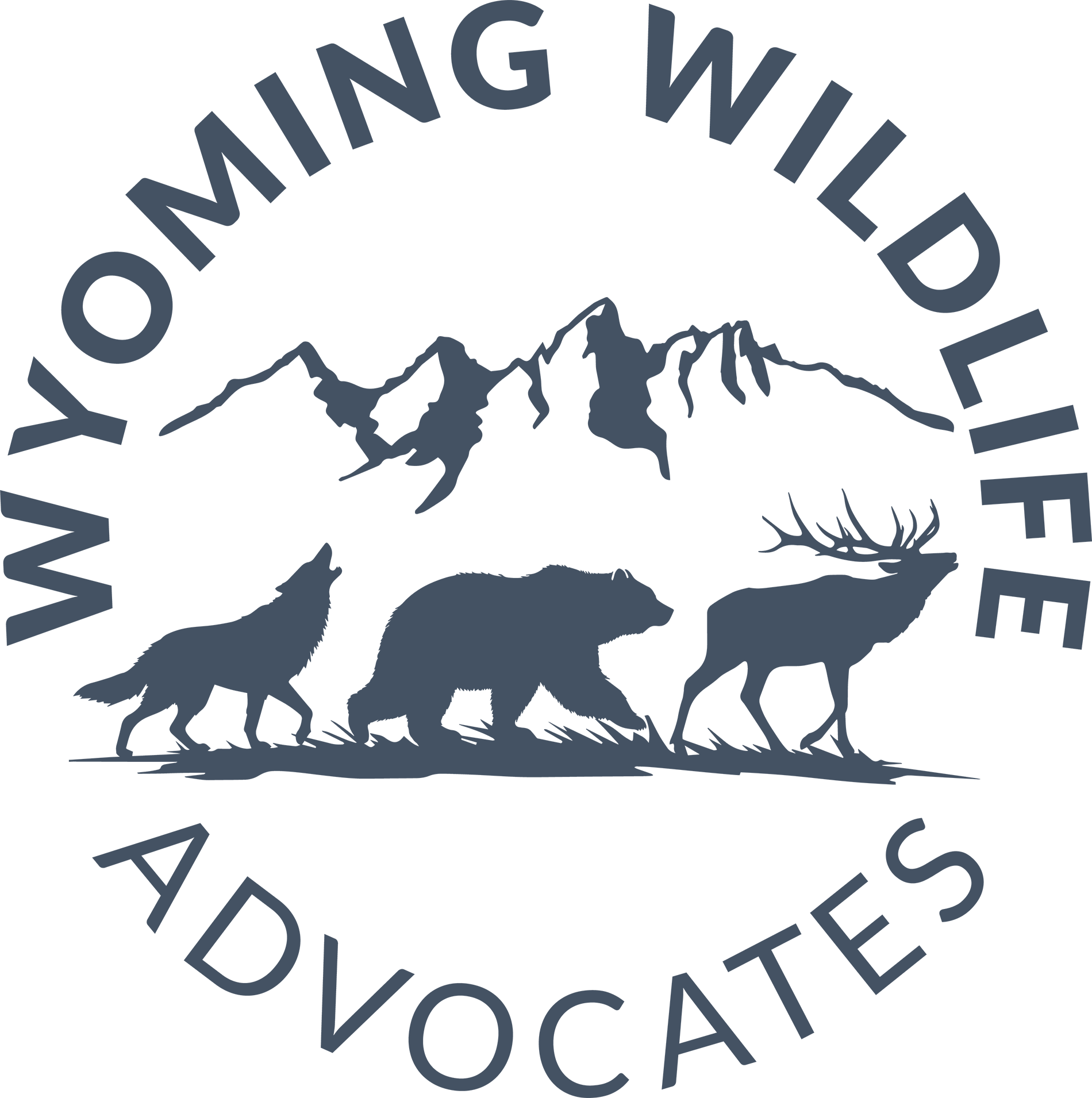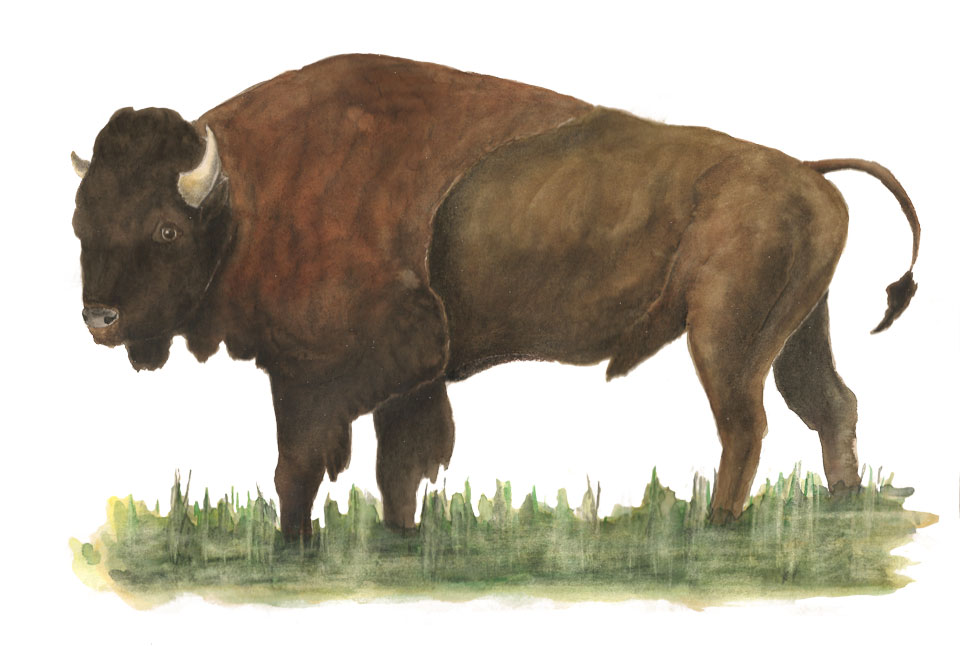Bison have inhabited the Grand Teton and Yellowstone region since prehistoric times. They live in the area year-round, favoring grasslands in the summer, where they eat mostly grass and sedges. Since the 1800s, bison have returned from the brink of extinction, following aggressive market hunting. By 1902, there were only two dozen left in Yellowstone; Today, there are around 4500 in that park.
The Jackson bison herd numbers 567. Most are fed on the National Elk Refuge. The refuge and the Wyoming Game and Fish Department want to reduce that number to 500. They are hunted in fall on the refuge.
Before the mid 1800s, it is estimated that 30 to 60 million bison roamed the plains of the United States.
Bison can live 12 to 15 years, and the males can weigh as much as 2,000 pounds, making them the largest land mammal in North America. During the mating season, which begins in August, males fight fiercely for females, and often inflict serious injuries with their horns on each other. Sometimes they die from their injuries.



